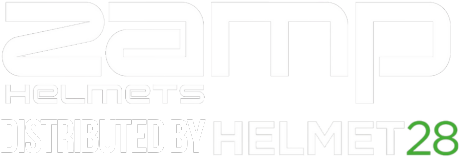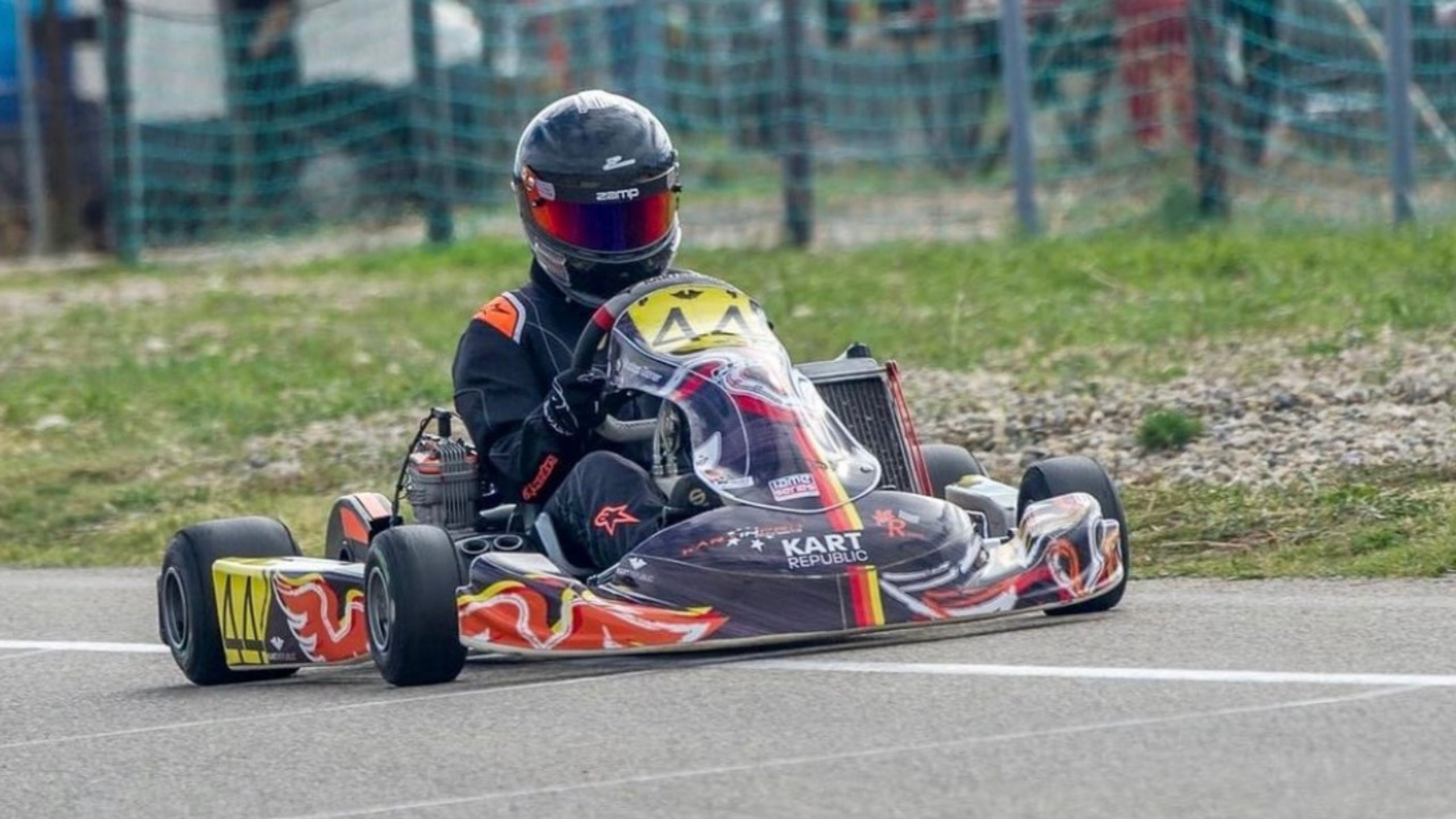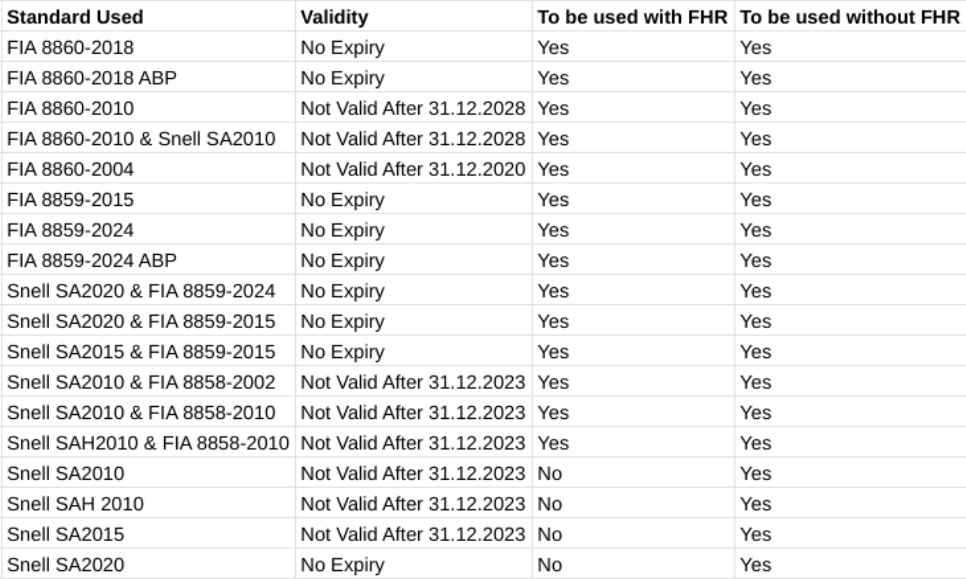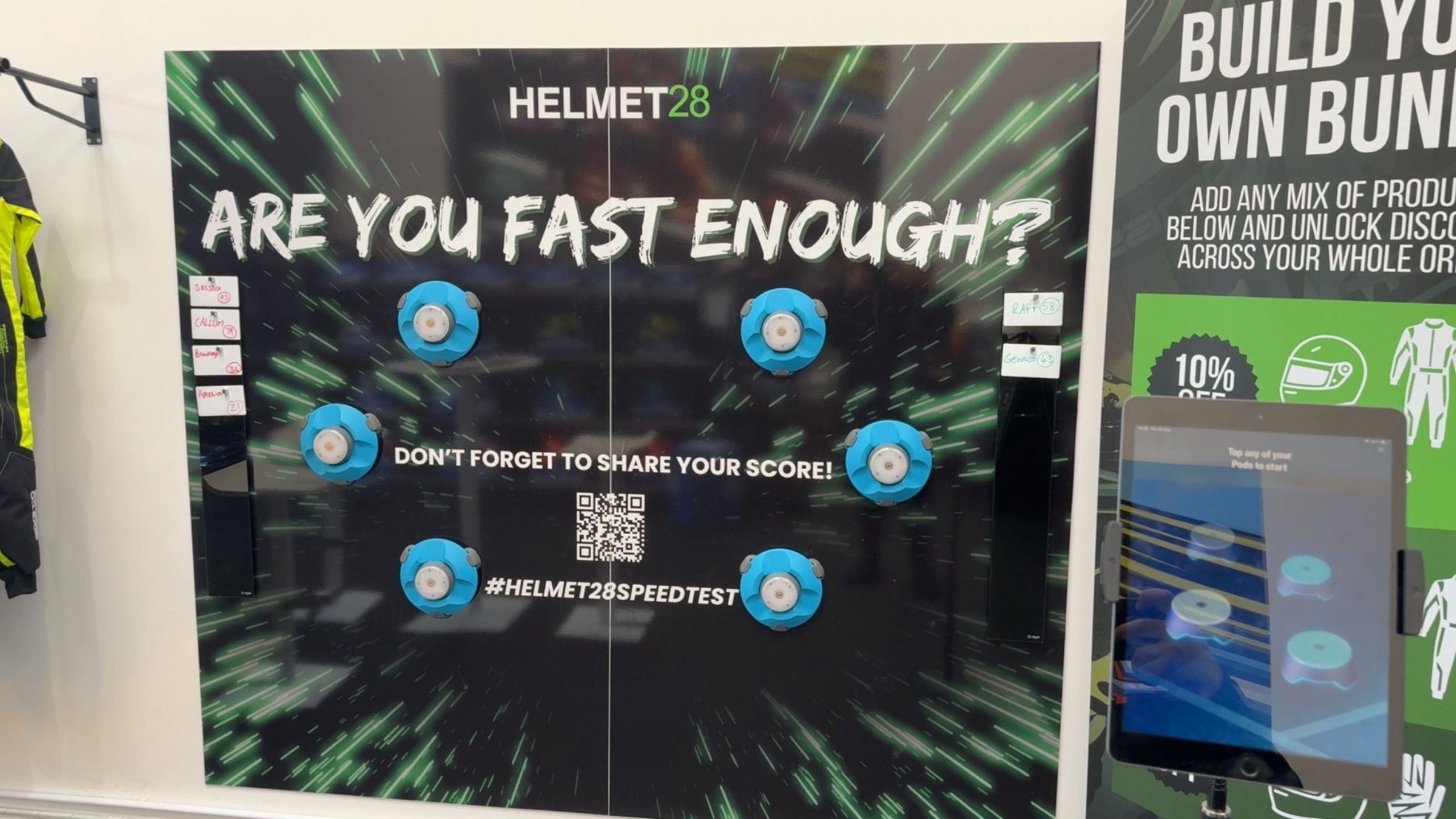Helmets are your most important piece of safety equipment in motorsport. To ensure you’re fully protected, it’s essential to understand the different helmet standards and how they apply to your racing needs. This guide breaks down the key differences between FIA and Snell certifications, helping you make the best choice for your safety.
What is Homologation?
Homologation refers to the safety standards helmets must meet to be approved for use in motorsport. The FIA and the Snell Memorial Foundation are the two leading organizations that test and certify helmets to ensure they can withstand the extreme forces of racing accidents.
You’ll find the helmet’s certification label inside, usually near the crown. Some helmets hold dual certifications, but in motorsport, FIA standards take precedence in both national and international events.
FIA 8859-2024
As of 2024, the benchmark for motorsport helmets is the FIA 8859-2024 standard. This latest iteration offers enhanced protection without compromising weight or comfort. Key improvements include:
- 14% improved overall energy management
- 5% increased impact energy resistance
- Higher peak g-force limit (300G)
- Enhanced visor locking device and penetration resistance
The Future of Helmet Safety: FIA 8859-2024 ABP
In 2025, the FIA will introduce the 8859-2024 ABP (Advanced Ballistic Protection) standard, offering even greater protection for open-wheel and open-top racing. This standard sets new benchmarks for impact energy absorption, sharp object penetration, and HANS/FHR device compatibility.
Advanced Helmets: FIA 8860-2018 and 8860-2018 ABP
For the highest level of protection, consider helmets certified to the FIA 8860-2018 and 8860-2018 ABP standards. These helmets are typically used in Formula 1, F2, F3, and Formula E due to their smaller eye ports and increased structural strength.
A Note on Homologation Expiry Dates
It’s important to be aware of helmet expiry dates. While some standards, like FIA 8859-2015, currently have no expiration, it’s crucial to check the latest regulations for specific racing series. Please reference the charts below for expiration dates:
Circuit Racing Helmet Standards
Karting Helmet Standards
Karting participants can use any of the above helmet standards (as long as they haven’t expired) or one of the following karting-specific standards:
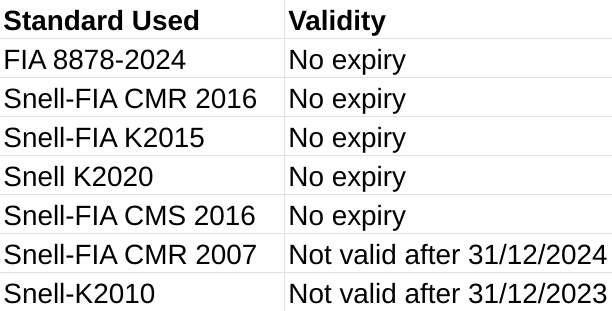
In 2024, karting helmet standards have been updated to further prioritise safety. The new FIA 8878-2024 specification introduces enhanced safety measures for adult karting helmets. For drivers under the age of 15, the Snell-FIA CMR2016 specification remains mandatory, ensuring appropriate protection for younger competitors.
While the Snell-FIA CMR standards are required for drivers under 15, older drivers have the flexibility to use either helmets certified to the CMR standard or those meeting adult specifications like FIA 8878-2024.
Stay Safe, Race Smart
By understanding helmet standards and choosing the right gear, you can significantly reduce the risk of injury in motorsport. Remember, your safety is paramount.
Please note that all information is accurate as of December 2024. Always consult the latest FIA technical list for the most up-to-date information & consult your race provider for more information on the level of homologation required for each racer & formula.
